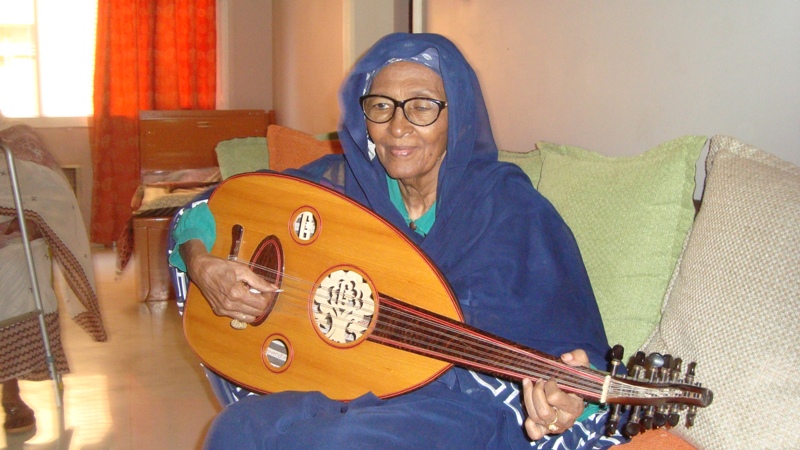Why Asma Hamza in news?
Google honours Asma Hamza, a prominent Sudanese composer and oud player, with Doodle. On this day in 1997, Hamza achieved a remarkable milestone by emerging as one of the winners in the prestigious Laylat AlQadr AlKubra music competition held in Sudan.

Early life of Asma Hamza
Asma Hamza is the first female composer in Sudan and in the Arab world. Born in 1932, she grew up in a family that resembles a fruit tree that is laden with nightingales. She used to love the lute since childhood. The instrument has become an integral part of her life for now nearly 70 years. Many a prominentsinger performed her melodies. She is seen as the best ambassador for Sudanese women in this domain. “Sudanow” met her at her home in Halfaya in Khartoum and following excerpts of translation for that interview
- This led her to transition from singing melodies to skillfully whistling them. Witnessing her impressive ability to whistle in perfect harmony, her father decided to lend her an oud—an instrument resembling a lute but with a slender neck and no frets—allowing Hamza to practice her musical skills.
- Hamza had a remarkable talent for learning and playing songs on the oud, an instrument she had heard before. Without any formal training, she relied on her own memory and natural musical ear to teach herself. While her father was a strong supporter of her musical journey right from the beginning, she faced significant societal challenges.
- In Sudan, it was not socially acceptable for women to pursue music. Despite these obstacles, Hamza vividly remembers composing her very first piece in secret, hidden from the disapproving eyes of society.
Find More Miscellaneous News Here






 States and Capitals - How Many States in...
States and Capitals - How Many States in...
 Countries Starting with the Letter 'F,' ...
Countries Starting with the Letter 'F,' ...
 South Korea vs Thailand: Pop Culture Mee...
South Korea vs Thailand: Pop Culture Mee...

